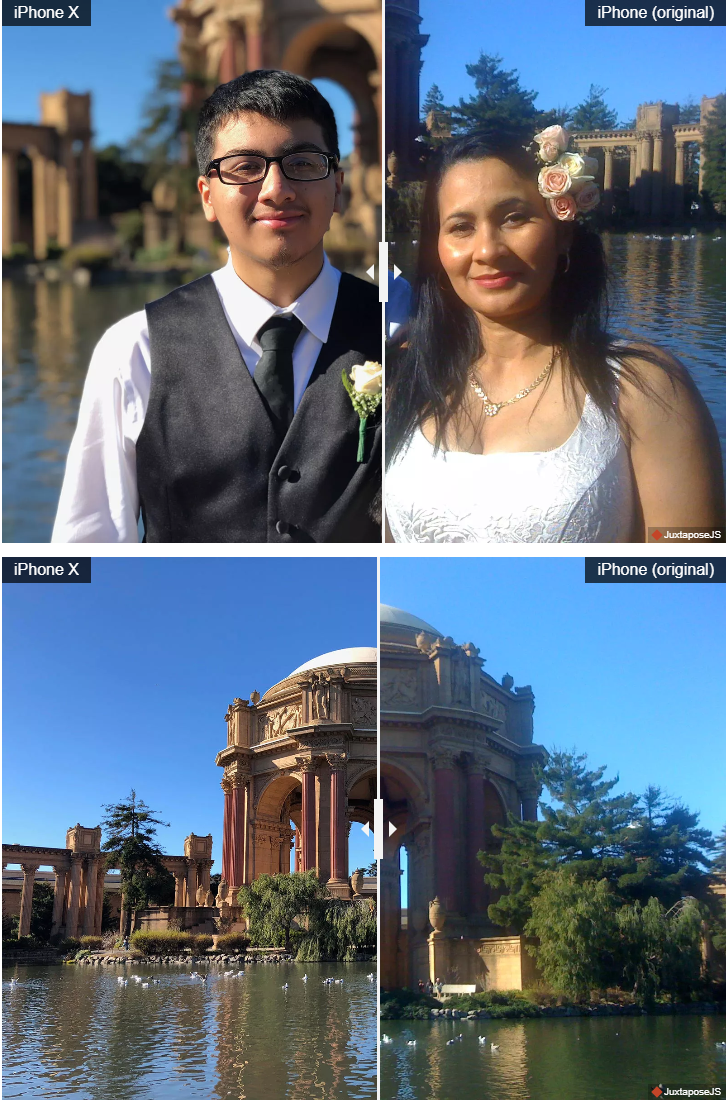 2997
2997
 2018-01-04
2018-01-04
Ten years is a long time in the tech world. In 2007, Facebook was only worth $1 billion -- it's about 500 times that now -- and the Motorola Razr was considered the ultimate luxury phone. It was also the year the first iPhone was released.
While the design and feature set of the phone has evolved over the past 10 years, just how much has the camera improved? We decided to take some photos on the X and the original iPhone, side-by-side, and compare them. All in the name of fun, of course.

Some fun features found on the original iPhone:
First introduced on the iPhone 7 Plus, portrait mode is an effect that uses the two cameras to create a bokeh effect. (Bokeh is the shallow depth of field normally associated with DSLRs that makes the subject look sharp compared to the background.)
In good lighting conditions, the photos from the original don't lose that much detail. But they can look a little fuzzy, almost like there's a film over the lens. Of course, we made sure to clean the lens before we started shooting. You'll also notice on the landscape shot directly above that the photo from the original iPhone looks more zoomed in -- that's because the field of view of the lens is 37mm equivalent, rather than the 28mm equivalent on the iPhone X.
As you would expect, the X is able to capture a wider dynamic range, and photos have excellent clarity and sharpness compared to those of the original.
Low light
Cameras with small sensors, like those found on phones, can struggle in low light situations. There's no optical image stabilization (OIS) on the original iPhone, and the lens itself is not particularly fast. Having OIS means the camera's shutter can stay open for longer to let in more light. This can help compensate for motion blur caused by handshake and generally speaking, a camera or lens with OIS will produce a sharper photo in low light than a camera without it. No surprises, then, for guessing the original iPhone has trouble taking a good-looking shot in the dark.
But what's it like to use as a camera?
What I love about the original iPhone is how sturdy it feels when taking photos. Even though it's a small phone, you never fear what might happen if you drop it accidentally. Unlike the glass back plate on the X, the original's aluminum and black plastic back can take a beating. Plus, it fits neatly into a pocket.
There's something to be said about the simplicity of the camera interface. One button and no other controls harks back to the days of the most basic point-and-shoots, or even Polaroid cameras. You're not so worried about the details: just press a button and capture the moment, motion blur and all.
Don't get me wrong. I wouldn't go back to using a 2-megapixel point-and-shoot in place of today's sophisticated phone cameras. But I was genuinely surprised at how much I enjoyed using a 10-year-old camera with such limited controls.
Source: cnet